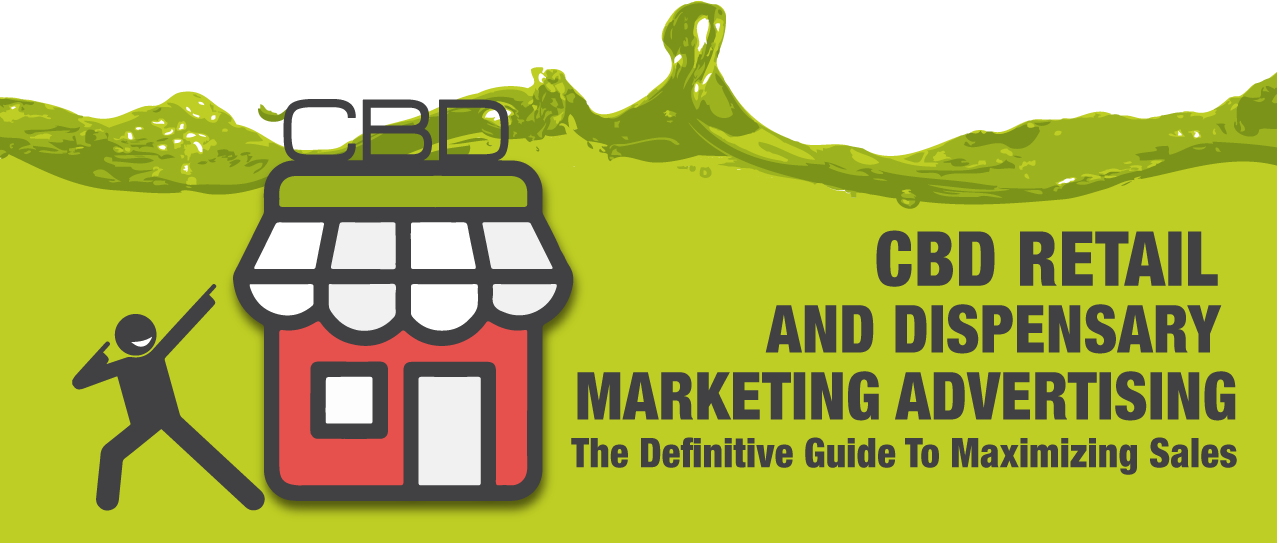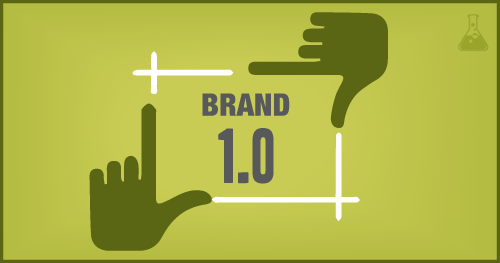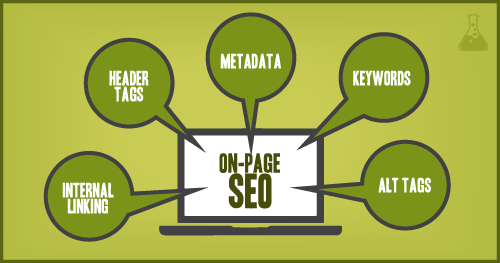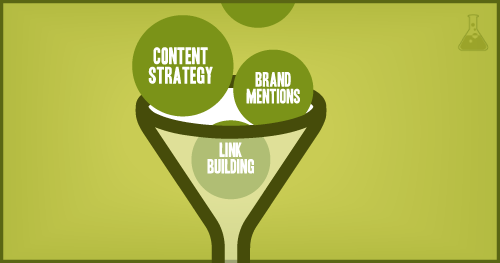
The CBD market is expected to grow 32% over the next five years.
If you're a CBD company, you're likely already feeling the effects of stiff competition. By polishing your current CBD marketing strategy, you can yield large results with small changes.
Treat this CBD dispensary marketing guide as a checklist.
Go over it with a fine-tip comb and up your inbound strategy now!
Differentiate Yourself, Create a Brand
 This year, Inc referred to the CBD industry as “the next gold rush.”
This year, Inc referred to the CBD industry as “the next gold rush.”
As the industry booms and CBD infused products make their way to mainstream products sold in commercial realtors, it's even more important for companies to have a strong brand.
Simply labeling a product as a wellness or health product isn't enough to stand out.
The key to standing out is to find a unique angle, by identifying a need of your target audience that isn't being filled.
One of the best ways to differentiate your brand is by having a top-performing CBD business website with all of the bells and whistles to help you provide an incredible user experience to all potential customers who visit your site.
Another great way to differentiate your brand is by researching new CBD studies that can support the use of your product in an original way.
Define Your Target Audience
Being able to define your brand goes hand-in-hand with specifying who your audience is.
You can't honestly know what the needs of your market are if you don't actually know who they are.
Some companies don't take the time to get specific enough with their audience and try to appeal to a more mass, general market.
But unfortunately, this tactic doesn't work in the long run.
A vanilla brand fails to really “speak” to anyone and turn them into loyal customers.
Fewer loyal customers who will consistently buy your products and work as brand ambassadors are much more valuable in the long term than a lot of one-time products who don't connect with your product or help spread its reach.
Defining your target audience should take time, creative brainstorming, out-of-the-box thinking, and lots of data.
It's important to deep-dive your product, its uses, and who it can uniquely serve.
Establish a Basic Keyword Strategy
 A basic keyword strategy will create the foundation for your inbound strategy.
A basic keyword strategy will create the foundation for your inbound strategy.
To create a keyword strategy, start at the basics.
What are the core topics your CBD or hemp company wants to be known for?
Starting with identifying your audience and establishing a solid brand will help you identify what these core topics will be.
Think about what words and topics you want your brand to be associated with—the words that you want your brand to be delivered to users with when they perform a search.
For CBD, think basics, but also beyond basics.
If you sell a line of CBD infused ointments and creams, do you want to be associated with health products?
Or do you identify with more of a cosmetic audience?
Who's buying your product?
Are busy stressed out moms your target audience?
Or more of a ladies who lunch crowd?
Or possibly seniors dealing with aches, pains, and recoveries from health problems?
When you know the answers to these questions, you can start to strategize what a person in your audience might actually search for.
By the examples above, you can tell that the interests, needs, and intentions behind each of these target audiences will be different.
So the way you would market to each, and attempt to speak to each, would also be different.
You'll also want to consider who your competitors are and what they are ranking for.
Doing Keyword Research
When you've completed research and brainstorming, you should have anywhere from five to 10 core topics of focus.
They should be somewhat general, like “stress management” or “holistic health.”
These topics should be easy to build subtopics off of.
Now, you'll want to use the Google Ads Keyword Planner, it's a free tool that will help you identify and choose keywords you want to be ranked for.
Start by performing a search for each of your topics through the “keyword ideas” search option.
When you do this, you'll be shown a list of keywords and phrases that are all ranked in different ways.
There will be competition levels and the average number of monthly search queries.
It's important to “get real” with yourself about your business when choosing which keywords you want to be ranked for.
Keywords like “best CBD cream” and “CBD lotion” get a high number of monthly searches, but they are also extremely competitive.
If you aren't a major corporation with a massive marketing budget, trying to compete for keywords like this will likely be wasted effort.
This is another area where knowing your audience and defining your niche will come into play. It can help you put a unique spin on your keyword strategy.
If moms looking for a fast and affordable option are your target audience, consider searching for keywords like “CBD lotions new moms” or “CBD creams working moms.”
These keywords might be less competitive and have fewer searches, but they will better target your unique audience and likely bring better results to your efforts.
Also, consider your location. Are you targeting the whole world? A specific country? A specific state or city?
Adding some geo-specific keywords will further help you become more visible to your target audience.
Just make sure you know the CBD laws in your region before applying a strategy.
What a Keyword Campaign Should Look Like
At the end of the keyword process, you should have about five to 10 diverse keywords per topic.
Choose long-tail keyword phrases like “where to find CBD creams for moms in Yonkers” and short-form keywords like “CBD creams for moms.
You should also have a variety of keywords that have different levels of competition and average number of monthly searches.
Don't underestimate searches with lower monthly averages and levels of competition.
The more true and specific to your target audience your keyword strategy is, the more beneficial it's going to be to your sales and building a loyal customer following.
Getting loyal customers who will work as your brand ambassadors is vital in the CBD and hemp industry.
Consider Both Paid and Search Engine Marketing Strategies (SEM)
 When people think of search engine marketing, they often think of either paid strategies like Google Ads or unpaid, organic strategies like optimizing a website or guest posting.
When people think of search engine marketing, they often think of either paid strategies like Google Ads or unpaid, organic strategies like optimizing a website or guest posting.
Both of these are right.
Search engine marketing has two parts: search engine optimization (SEO) and pays per click (PPC).
SEO is the unpaid kind of SEM, and PPC is the paid type of SEM.
Both types focus on improving your site's search rankings for specific keywords.
They just go about it in different ways.
Since CBD is such competitive marketing, it's smart to consider both paid and unpaid forms of SEM.
Creating the Best PPC Strategy for CBD
PPC strategies are the most successful when they have a clearly defined goal or purpose that the entire team is in agreement with.
At a minimum, every PPC campaign should have the following:
- Target audience or buyer persona
- A theme, like a holiday or seasonal need
- Key metrics that will be tracked throughout the campaign and measure success (not just standard metrics, but a group of KPIs specifically curated to measure this campaign)
Once the above is identified, you can move on to choose the type of campaign you want to run.
Essentially there are four different types of PPC campaigns: traffic generator, qualified leads, special offers and sales, and brand recognition.
On-Page SEO Strategy for CBD Dispensary Marketing
 SEO is broken down into on and off-page.
SEO is broken down into on and off-page.
On-page SEO is an optimization that happens on your website, and off-page SEO happens off of your website.
The best on-page strategy to have is an optimized website.
To find out how SEO-friendly your site is, you'll likely need to conduct an SEO audit.
This is especially true for websites that are not new.
Your website should be easy for both Google crawlers and users to navigate.
The only pages you really need to have are a home page, a blog feed, a store page (if you have an e-commerce business), an “about us” page, and a page for each of your core topics.
Anything more complicated than this is likely unnecessary.
After condensing your website, you'll want to optimize your website's copy.
Here's a guide to some best practices:
- Choose one primary keyword, and a handful of secondary keywords to focus each page's copy on
- Create copy that provides value to your audience, and that's helpful, not promotional
- Make sure the word count for each page is at least 500 words, although more is preferred
- Include internal and external links on every page, about two of each for every 500 words
- Apply subheads, and make sure at least one is optimized with keywords but relevant
- Include keywords at the beginning, middle, and end of your copy
- Use keywords in the robots meta tag and title tags for every page
- Integrate your company name into page titles, but stay below a character count of 70
- Add a call-to-action on every page
- Make sure your URLs all contain a target keyword
- Write good meta descriptions, and include keywords in them (but don't keyword stuff)
- Include image alt text in every image
- Check to make sure your site is actually set up to be indexed by Google, Yahoo, and Bing
- Ensure that your website is compatible with mobile
Don't get overwhelmed by this list.
You can hire professionals to help you put your website together instead of doing it on your own.
Have an Off-Page Content Strategy
 Optimizing your website is only half of a successful organic SEO strategy.
Optimizing your website is only half of a successful organic SEO strategy.
Google doesn't only take into account what you have to say about your brand, it considers what other people are saying about you too.
Traditionally an off-page content strategy consisted of generating a backlink portfolio of other, high ranking sites that link to your website via specific keyword groupings you want to be ranked for.
As the Google Algorithm evolves, having the link is still valuable, but Google also considers unlinked brand mentions in other content too.
Some of the go-to methods for generating off-page content are guest posting, distributing press releases about company news across newswires, and publishing content on owned, third-party publishers like Medium.
Off-page strategies can sway into the realm of brand management and public relations too since assets like media or influencer mentions can also be part of an off-page strategy.
As a CBD company, it's especially important to take any opportunity you can to get ahead of the competition.
Many organizations lack a sophisticated off-page strategy, simply because it's time-consuming and requires a bit of know-how.
Choose the Right Social Networks for Your Audience
 Many companies make the mistake of thinking they need to be on every single platform in order to be successful on social media.
Many companies make the mistake of thinking they need to be on every single platform in order to be successful on social media.
If you're a major corporation that can afford a dedicated team, who can make specialized strategies for each platform that's relevant to your brand, awesome!
But most companies don't have that bandwidth.
It's important to understand that social media platforms have become their own search engines and that Google values a social presence in how it ranks your business.
Social media is essential for CBD businesses that want to be competitive.
At the very least, have a Facebook page that's optimized, branded, and updated weekly.
Boost your posts to improve reach and visibility.
Consider your audience, if you're a B2B company, you might want to engage with a LinkedIn strategy.
If you target urban Millennials, Instagram is a good platform.
Meet your audience where they are, and familiarize yourself with the different audiences on each social media network.
Are you ready to take your CBD business to the next level?
- Are you struggling to run an effective CBD marketing campaign? Click here to book a complimentary strategy call with a certified digital marketing expert.
- Want to work smarter, not harder with your digital marketing? Check out these marketing resources that will make your life easier.
- Something else on your mind? Click here to get in touch with our team.







